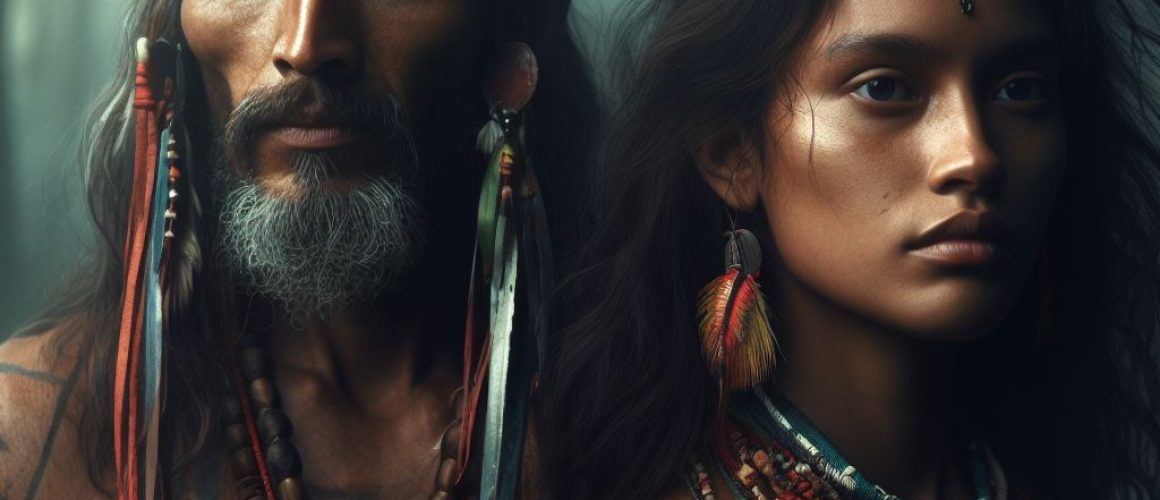The Forgotten People: Uncovering the Taino
They were the first people to welcome Christopher Columbus upon his fateful arrival to the Caribbean. Yet today, the Taino people have faded into the shadows of history, their culture and language vanishing after centuries of oppression. But their name and legacy persist, even if many are unaware of its origins.
So who exactly were the Taino people? And what does their name represent? Modern scholars believe “Taino” derives from the word meaning “good” or “noble” in their Arawakan language. As the predominant indigenous group occupying the Greater Antilles islands in the 15th century, the Taino played a pivotal early role in European colonization of the Americas. Their initial friendliness toward Columbus catalyzed Spain’s colonization efforts, setting in motion a tragic demise for them.
Centuries later, the real meaning behind “Taino” reminds us of this forgotten people, their once vibrant culture and the violent clashing of civilizations that followed 1492. Unpacking its definition not only honors their memory but symbolizes the resilience of their heritage, which persists in subtle ways throughout the Caribbean today.
Let’s explore the history of the Taino people and the meaning behind their controversial name, revealing glimpses into an ancient civilization overshadowed by conquest but still very much a part of the Americas’ collective ancestry.Before 1492, over a million Taino inhabited the islands of the central and northern Caribbean, particularly Hispaniola (modern-day Haiti and the Dominican Republic), Puerto Rico, Cuba and Jamaica. Divided into competing chiefdoms, they relied on agriculture and fishing to sustain their villages, cultivating crops like yuca, maize and pineapples.
Skilled artisans crafted objects from stone, shell, wood and cotton they wove into cloth. Spirituality infused their daily lives as religious leaders communicated with zemis, or ancestral spirits. Dance, music, ceremonies and a complex mythology bonded communities ruled by caciques (chiefs) and beholden to behiques (shamans).
When Columbus first encountered Taino people after making landfall on San Salvador island in October 1492, he wrote admiringly of them in his journal, “They traded with us and gave us everything they had, with goodwill…they took great delight in pleasing us.” Captivated by their friendliness, beauty and generosity, Columbus called them “Indians” assuming he had reached the East Indies.
We now know the first peoples he met were Taino, meaning “good” or “noble” in their Arawakan language. Their initial trusting nature and aid paved the way for Spain’s colonization of the region. Yet within decades, oppression, slavery and European diseases decimated them.Intent on exploiting the New World for glory and profit, Columbus established La Navidad settlement on modern-day Haiti in 1492, leaving 39 crewmen behind. Seeking riches, they kidnapped and raped Taino women, murdering men who resisted. By the time Columbus returned in 1493, his outpost had been destroyed, all 39 Spaniards killed.
Undeterred, colonists founded La Isabella settlement in 1494, beginning Spain’s control of Hispaniola fueled by the Taino slave trade. In just two decades the Taino population plummeted from one million when Columbus arrived to around 32,000 by 1509. Enslavement, mass suicide, warfare, famine and European diseases like smallpox, measles and influenza decimated them.
Some Taino staged rebellions including brave leaders like Enriquillo, whose escaped slave armies resisted conquest for over a decade. But superior Spanish weapons and ruthless military campaigns led by conquistadors like Ponce de León ultimately prevailed, solidifying imperial control. By 1550 a people that once inhabited and thrived across the Caribbean teetered near extinction.
Centuries later, the name Taino invokes the memory of these first Native American encounters with Columbus. Their swift demise constitutes one of history’s gravest genocides, setting in motion the model of systematic Indigenous exploitation seen again and again by European colonizers in the Americas.
Yet the heritage of the Taino persists. In Puerto Rico, Dominican Republic and Cuba some customs, artifacts and words trace back to them, like “hamaca” (hammock) and “huracán” (hurricane). Genetic studies show 61% of Puerto Ricans possess indigenous mitochondrial DNA markers. Efforts are underway to revive the Taino language using 500 rediscovered words.
Sadly no fluent Taino speakers remain today, just fragments hinting at dormant cultural resilience. But reexamination of history and etymology helps uncover erasured Indigenous peoples, ensuring mythologized events like 1492 are seen through more objective, accurate lenses.
By revisiting terms like Taino we better understand the unfolding impacts of contact and colonialism throughout the Americas. Unflattering details get overshadowed by narratives glorifying explorers. Humanizing the Taino, remembering their demise, brings balance to sanitized versions of the past which so often valorize colonizers at the expense of the colonized.
Ultimately the word “Taino” honors Indigenous peoples who paid the ultimate price after opening their homelands to infamous explorers more conqueror than discoverer.

